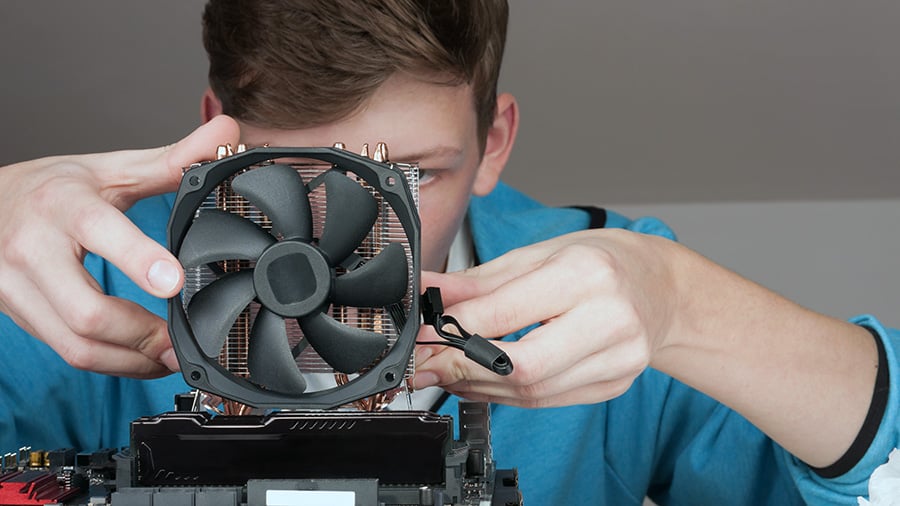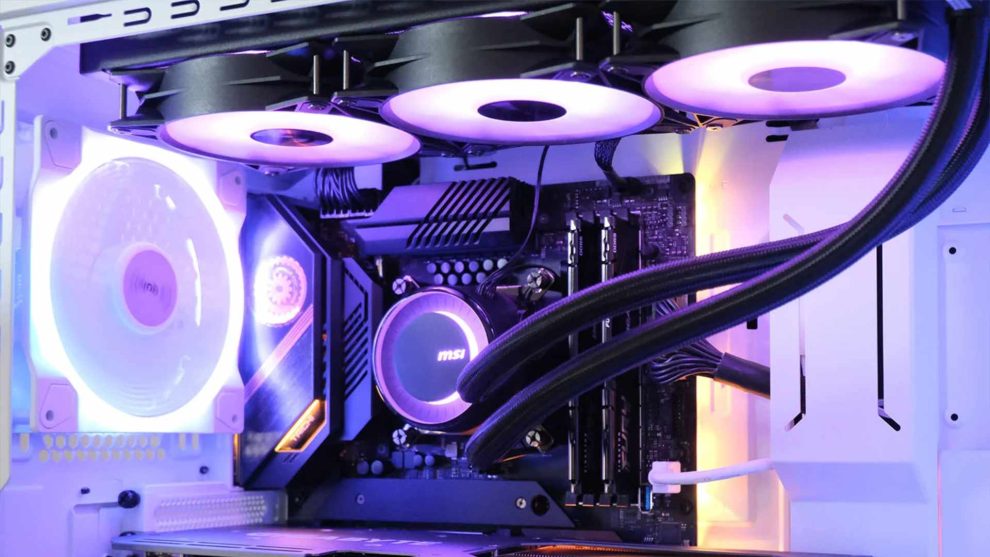Traditional all-in-one (AIO) liquid CPU coolers have become quite popular in recent years. They offer a good balance of cooling performance and noise levels compared to traditional air coolers. However, they still come with one major drawback – the use of a pump. While pumps effectively circulate coolant, they can also be a source of noise as they age.
This is where a new type of cooler, the pump-less liquid CPU cooler, comes in. As the name suggests, this type of cooler does away with the traditional pump design. Instead, it relies on a thermosyphon design to circulate coolant.
Recently, a prototype pump-less CPU cooler was tested at TechPowerUp. The results were interesting:
- The pump-less cooler was quieter than traditional AIO coolers
- But it was also less efficient at cooling
While more development may be needed, the basic concept shows promise. Pump-less liquid CPU coolers could one day be a viable alternative focusing on low noise over maximum cooling capacity.
In this article, we’ll cover:
- How pump-less liquid CPU coolers work
- Benefits and drawbacks of the technology
- Test results from early prototypes
- The future outlook for these unique coolers

How Do Pump-Less Liquid CPU Coolers Work?
Pump-less liquid CPU coolers rely on an internal thermosyphon design to move coolant instead of a pump. A thermosyphon is essentially a heat pipe that uses evaporation and condensation of a fluid to transfer heat.
Here are the key components and operation of a thermosyphon-based CPU cooler:
- Sealed tube – Filled with a liquid coolant and wicking material
- Wicking material – Porous lining used to draw liquid up and down the tube
- Evaporator (bottom) – Heat is applied here, causing liquid to boil to vapor
- Condenser (top) – Vapor condenses back to liquid and transfers heat
- Gravity return – Condensate flows down wick due to gravity
The Cooling Cycle
Here is how the thermosyphon cooling cycle works:
- At the evaporator, heat from the CPU boils liquid to vapor
- The vapor rises up to the condenser
- The vapor condenses back to liquid at the condenser, releasing heat
- The condensate flows back down the wick to the evaporator due to gravity
- The liquid boils again and the cycle repeats
This self-sustaining cycle constantly transfers heat away from the CPU to be dissipated, providing cooling power without any moving parts like a traditional pump.
Benefits of Pump-Less Coolers
Pump-less liquid CPU coolers offer some potential benefits:
1. Quieter Operation
With no pumps or other moving parts, pump-less coolers should produce much less operating noise than traditional all-in-one (AIO) liquid coolers.
2. Design Simplicity
Thermosyphon designs are relatively simple compared to electric pumps and complex tubing. Simpler construction can increase reliability.
3. Potentially Lower Costs
The simpler design could translate to lower manufacturing costs over traditional AIO coolers.
Drawbacks and Challenges
While the thermosyphon concept shows promise for quiet cooling, it isn’t without some downsides:
1. Lower Cooling Capacity
Tests show thermosyphon coolers lag behind top-tier AIO coolers and air coolers in heat dissipation performance.
2. Limited Compatibility
The evaporator cold plate surface needs full contact with the CPU for heat transfer. Some CPU sockets may present installation challenges.
3. Heat Pipe Limitations
Effective thermosyphons rely on a balance of wicking flow, surface area, fluid volume, and evaporation/condensation rates. Deviating too far from an optimal design can severely impact performance.
Prototype Testing and Results
The current concept pump-less CPU cooler remains in early prototyping and testing. But initial thermal testing from reviewers like TechPowerUp shows promising results.
Test Setup
The prototype uses an extended heat pipe attached to an aluminum heatsink array instead of a liquid radiator for condensing. Tests measured cooling capacity using an Intel i9-12900K processor over a 30 minute CPU stress load.
Key Test Results
- 54 degrees C average CPU temperature
- 15 degrees C warmer than Noctua NH-D15 air cooler
- Noise levels were not formally measured but subjectively quieter than traditional AIO pump noise
Analysis
While less efficient than top coolers, a 15 degree delta is still reasonable cooling performance. And the company claims further noise testing will quantify acoustic advantages. There is likely more room for optimization around wick design, heat pipe layout, fin stack geometry, and base cold plate contact.

The Future of Pump-Less Liquid Cooling
Pump-less liquid CPU coolers are still an emerging concept, with development hurdles and design challenges to overcome. But early testing proves the fundamental concept can work. And the potential benefits of simple, quiet, self-contained cooling make further development appealing.
Considering rapid CPU power increases and overclocking demands, thermosyphon coolers likely won’t overtake electric pump solutions completely. But they could carve out an enthusiasts niche for lower-noise systems where absolute maximum cooling is not required.
















Add Comment